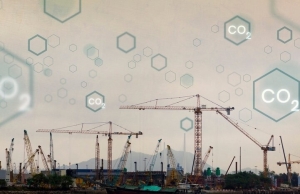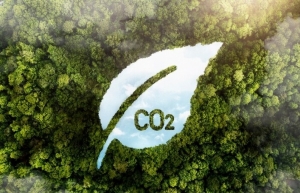Steelmaking can become climate-neutral process
Transitioning towards a climate-friendly steel production is therefore crucial to global climate action. Steel is part of the so-called hard-to-abate sectors, which also include chemicals and cement. In other words, decarbonising steel is far from trivial and requires considerable effort and innovation.
 |
| Dr. Guido Hildner German Ambassador to Vietnam |
Global steel production today accounts for at least 7 per cent of global greenhouse gas emissions. Germany’s steel sector is one of the largest emitters of CO2 and produces more than a quarter of Germany’s total industrial emissions. Developing and emerging economies in particular are reliant on steel, and about 70 per cent of global steel production takes place in Asia. In Vietnam, the steelmaking industry, which ranks number one in Southeast Asia, remains one of the main contributors to the country’s carbon emissions.
Decarbonising these sectors, in Germany and elsewhere, requires the adoption of a range of tools and technologies and mobilising investment. Arriving at a decarbonised energy system can only be achieved, if public and private financial and technology capacities work hand in hand. We know this very well from experience in implementing the “Energiewende” in Germany.
Europe and Germany are working on the transformation of steelmaking into what will ultimately be a climate-neutral and sustainable process. The biggest European and German steelmakers aim to become frontrunners in the production of low-CO2 steel. Germany and Europe are moving ahead, and will prove that a sustainable decarbonisation of steel production can succeed, technically and commercially. However, the industry will not make this transformation to low-carbon steel on its own.
The German government therefore aims to facilitate decarbonisation through funding programmes and by creating an adequate policy framework.
Of course, several challenges remain, of which the first is high upfront costs. Transitioning to new technologies like electric arc furnaces and green hydrogen-based steelmaking requires significant investment.
Second is the availability of clean energy. Electric arc furnaces and green hydrogen rely on significant supplies of clean energy.
Third is a reliable supply of green hydrogen. Large-scale hydrogen production from renewable energy is still in development. Germany is working intensively to support the market ramp-up of green hydrogen, and is funding green hydrogen projects worldwide.
Our primary objective is to combine prosperity with decarbonisation. We want to show that the shift to low-carbon production processes is a commercial advantage, and it can be done. We are convinced that energy transition is not only about energy security and affordable energy prices but also about international competitiveness. For this reason, the energy transformation is also an immense opportunity to create new and green jobs, markets, and partnerships.
We are therefore supporting our steelmakers by providing funding for new hydrogen-based routes to steelmaking, and also by working intensively to ensure that their future needs for hydrogen and renewable energies will be met. We are convinced that a relocation of the steel industry to countries with less ambitious climate rules cannot be an alternative, particularly with a view to global climate change mitigation.
The EU’s Carbon Border Adjustment Mechanism is a direct response to this and, at the same time, encourages industries around the globe to decarbonise and embrace greener technologies.
We all know that the green transition of heavy industries is a global challenge. Therefore, Germany launched the Climate Club during last year’s COP28. The club is an open and cooperative forum for member countries to support climate action.
The focus lies on accelerating the decarbonisation of emission-intensive industries such as steel and cement. One of its main objectives is to offer support for developing and emerging economies in their efforts to leapfrog into climate-friendly industrial development.
The Climate Club will enhance multi- and bilateral cooperation between members as well as partnerships. The aim is to support the mobilisation of public and private sector investment in this field, and it will map existing cooperation as a basis for addressing gaps and specific needs in financial and technical support.
Developing countries and emerging economies may benefit from targeted capacity building and technology transfer. The Climate Club currently consists of 38 countries and stands ready to welcome additional members.
When it comes to decarbonising the steel sector, there are still many challenges to overcome. But I am convinced that by making the steel sector fit for the future, it can make a significant contribution to global climate action and economic prosperity. Let us continue to work together towards this common goal.
 | Large emitters still to get to grips with carbon market Only a few developers of emission-heavy installations have a deep understanding of the emission trading system and carbon market, a wide-ranging survey has found. |
 | WB's 51.5-million-USD payment helping Vietnam reduce emissions Vietnam has received a 51.5-million-USD payment for verified emissions reductions (carbon credits) for reducing deforestation and forest degradation (commonly known as REDD+) and for enhancing carbon stored in forests through reforestation and afforestation. |
 | Vietnam to strengthen carbon credit management Prime Minister Pham Minh Chinh has urged ministries to work with relevant agencies to reach deals with international partners to develop a carbon credit market, reduce greenhouse gas (GHG) emissions, allocate emission quotas, and create green financial resources for Vietnam. |
What the stars mean:
★ Poor ★ ★ Promising ★★★ Good ★★★★ Very good ★★★★★ Exceptional
Related Contents
Latest News
More News
- Main drivers for Vietnam’s digital economy future (December 03, 2025 | 11:35)
- Pivotal stage of growth paves way for rise in M&As (December 03, 2025 | 10:00)
- Positive projections for M&A interest from Thailand (December 03, 2025 | 09:40)
- Manifesting the first line of defence in cybersecurity (December 03, 2025 | 09:00)
- The transformational role AI can play in accounting arena (December 03, 2025 | 08:00)
- Unlocking 5G-AI potential in Singapore (December 03, 2025 | 08:00)
- Data-driven strategies vital for a fast-evolving nation (December 02, 2025 | 09:41)
- Policy to practice: how Vietnam can lead the region (November 26, 2025 | 16:03)
- Mobilising private capital at scale vital for climate battle (November 26, 2025 | 15:36)
- VILAF and Yoon & Yang launch Vietnam - Korea Practice Unit (November 26, 2025 | 15:16)

 Tag:
Tag:





















 Mobile Version
Mobile Version